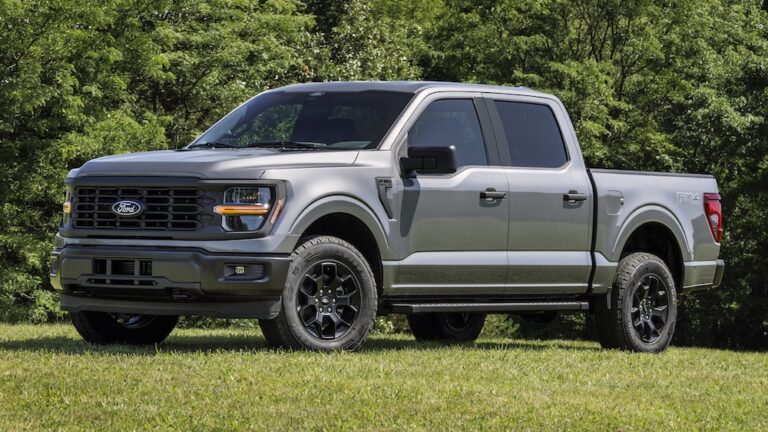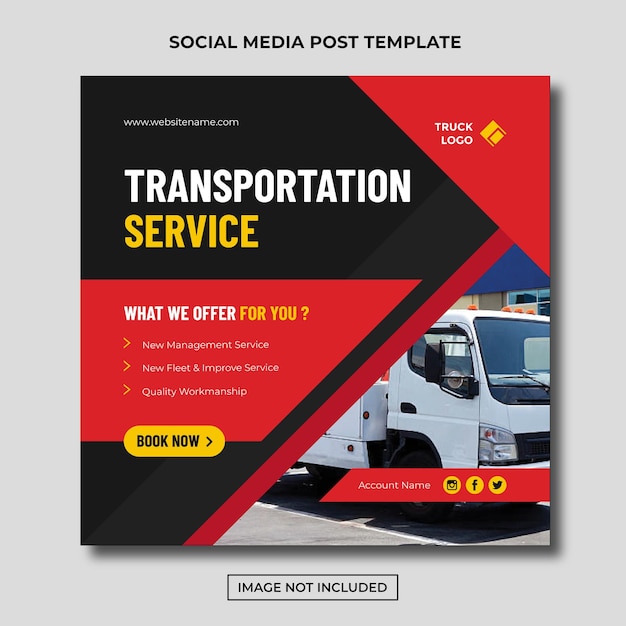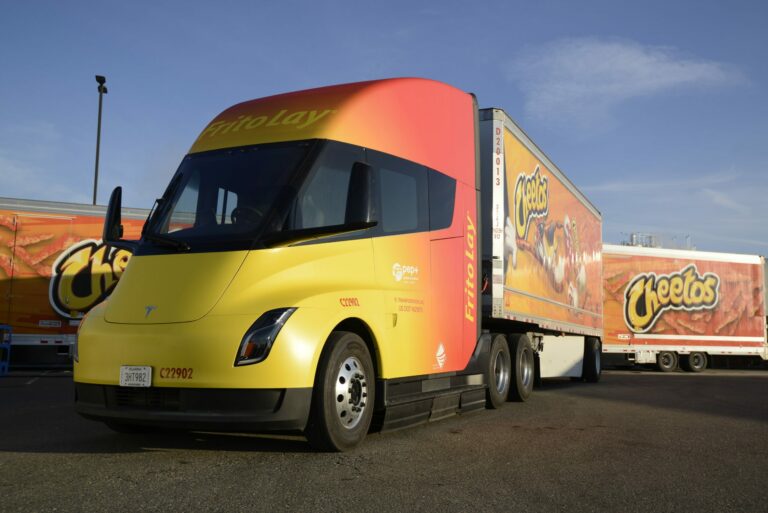Parts Of A Truck Bodywork: A Comprehensive Guide
Parts Of A Truck Bodywork: A Comprehensive Guide cars.truckstrend.com
Trucks are the backbone of global commerce, tirelessly transporting goods across vast distances. While their powerful engines and robust chassis are often the focus, the unsung hero of their functionality, safety, and efficiency is the bodywork. Far more than just an aesthetic shell, truck bodywork encompasses all the exterior and interior structures that form the vehicle’s shape, protect its occupants and cargo, and contribute significantly to its performance. Understanding the various parts of a truck’s bodywork is crucial for owners, operators, mechanics, and anyone involved in the trucking industry, impacting everything from maintenance and repair to fuel efficiency and driver comfort.
This comprehensive guide will delve into the intricate world of truck bodywork, exploring its essential components, their functions, the materials used, and the vital role they play in the overall operation of these mighty machines.
Parts Of A Truck Bodywork: A Comprehensive Guide
The Foundation: Cab and Chassis Components
The initial layer of truck bodywork begins with the cabin and the elements directly attached to the chassis, forming the truck’s core identity.
1. The Cabin (Cab Structure)
The cab is the nerve center of the truck, the driver’s office, and often their home away from home. Its bodywork components are designed for safety, comfort, and aerodynamics.
- Cab Shell: This is the primary structural enclosure, typically made of steel or aluminum, forming the roof, side pillars, rear wall, and floor pan. It’s engineered to withstand impacts and provide a safety cage for the occupants.
- Doors: Crucial for entry and exit, doors include the outer skin, inner panel, window mechanisms, and robust hinges and latches. They must be durable to withstand frequent use and contribute to the cab’s structural integrity.
- Windshield and Windows: Providing visibility, the large windshield is often laminated for safety, while side and rear windows are typically tempered. Their seals and frames are integral bodywork components preventing leaks and drafts.
- Grille: Located at the front, the grille is both an aesthetic feature and a functional component, allowing airflow to the engine’s radiator for cooling. It often houses the truck’s emblem and sometimes part of the lighting system.
- Bumpers (Front & Rear): More than just cosmetic, bumpers are designed to absorb low-speed impacts, protecting critical components and the cab structure. Modern truck bumpers often incorporate aerodynamic designs and light housings.
- Fenders (Wheel Arches): These curved panels sit over the wheels, preventing water, mud, and debris from being thrown up by the tires. They are critical for safety and keeping the truck clean.
- Side Skirts & Fairings (Chassis-Mounted): Extending along the sides of the chassis between the wheels, side skirts significantly improve aerodynamics by reducing drag underneath the truck. Fuel tank fairings, which enclose the fuel tanks, also contribute to this aerodynamic efficiency.


2. Chassis-Mounted Accessories
Beyond the core cab, several other bodywork elements are directly integrated with the chassis.
- Toolboxes and Storage Compartments: Often integrated into the side skirts or mounted separately on the chassis, these provide secure storage for tools, chains, and other equipment.
- Deck Plates/Catwalks: These non-slip platforms are installed behind the cab, providing a safe working surface for drivers to access air lines, electrical connections, and fifth wheel coupling mechanisms.
- Mirrors: While often considered accessories, the mirror housings and mounting arms are integral bodywork components, providing vital rear and side visibility. Modern trucks feature large, often heated and power-adjustable mirrors.

The Cargo Area: Specialized Body Types
The rear section of a truck is where its primary function truly comes to life. The bodywork here is highly specialized, designed to accommodate specific types of cargo, optimize loading and unloading, and ensure safe transport.
1. Dry Van/Box Body
The most common type, a dry van, is an enclosed, box-shaped trailer or rigid body used for general freight that needs protection from weather.
- Walls: Typically made of aluminum, fiberglass reinforced plywood (FRP), or composite panels, designed for durability and weather resistance.
- Roof: Usually a single sheet of aluminum or fiberglass, sealed to prevent leaks.
- Floor: Heavy-duty wood (oak or laminated hardwood) or aluminum, designed to withstand heavy loads and forklift traffic.
- Rear Doors: Most commonly swing doors (barn doors) or roll-up doors, providing secure access to the cargo.
- Side Doors: Less common but present on some models for easier access to specific cargo sections.
2. Refrigerated (Reefer) Body
Similar to a dry van but with insulated walls, floor, and roof, along with a refrigeration unit.
- Insulated Panels: Thick, multi-layered panels incorporating foam insulation to maintain precise temperature control.
- Thermal Barrier Doors: Designed with extra insulation and seals to prevent heat exchange.
3. Flatbed Body
A simple, open platform designed for oversized, heavy, or irregularly shaped cargo that doesn’t require protection from the elements.
- Deck: A robust flat platform, typically made of wood, steel, or aluminum, designed to bear significant weight.
- Headboard: A protective barrier at the front of the deck, shielding the cab from shifting cargo.
- Rub Rails & Stake Pockets: Along the sides, these allow for securement of cargo using straps, chains, and removable side stakes.
4. Dump Body
Used for hauling loose materials like sand, gravel, and demolition debris, designed for easy unloading by tilting.
- Heavy-Duty Steel or Aluminum Construction: Built to withstand abrasive materials and heavy impacts.
- Tailgate: A robust rear gate, often hydraulically operated, that swings open or pivots upwards for dumping.
- Hoist Mechanism: While internal, the bodywork must be designed to accommodate the hydraulic cylinders that lift the bed.
5. Tanker Body
Designed to transport liquids (fuel, chemicals, milk) or gases, often with specialized internal compartments.
- Cylindrical or Elliptical Shell: Made from steel, aluminum, or stainless steel, designed to contain specific types of cargo safely.
- Baffles: Internal structures within the tank to prevent liquid surging during transit.
- Manways and Valves: Access points and control mechanisms for loading and unloading.
6. Curtainside Body
A hybrid combining elements of a flatbed and a dry van, offering weather protection with easy side access.
- Rigid Roof and Front/Rear Walls: Similar to a dry van.
- Retractable Curtains: Heavy-duty PVC-coated fabric curtains on the sides, which slide open for quick side loading and unloading, eliminating the need for a loading dock.
7. Specialized Bodies
Many other body types exist for specific industries, including:
- Car Carriers: Multi-level ramps and platforms.
- Refuse Trucks: Compacting mechanisms and rear loaders.
- Logging Trucks: Heavy-duty bunks and cranes.
- Service & Utility Trucks: Compartmentalized bodies with specialized equipment.
Aerodynamic Enhancements
With fuel efficiency being a major concern, many bodywork components are specifically designed to reduce aerodynamic drag.
- Roof Fairings/Deflectors: Mounted on top of the cab, these direct airflow smoothly over the top of the trailer, reducing the gap between the cab and trailer.
- Cab Extenders: Panels that extend from the rear of the cab to fill the gap between the cab and trailer, further streamlining airflow.
- Boat Tails/Rear Fairings: Devices attached to the rear of trailers, designed to reduce drag caused by the vacuum created behind the vehicle.
Materials and Construction
The choice of materials for truck bodywork is critical, balancing strength, weight, durability, and cost.
- Steel: Heavy, strong, and relatively inexpensive. Used for chassis, frames, heavy-duty dump bodies, and structural components. Susceptible to rust.
- Aluminum: Lighter than steel, corrosion-resistant, and strong for its weight. Often used for cabs, flatbeds, tanker bodies, and dry van skins to reduce weight and improve fuel efficiency. More expensive than steel.
- Fiberglass Reinforced Plastic (FRP): Lightweight, durable, and resistant to corrosion and minor impacts. Commonly used for dry van walls, some aerodynamic fairings, and non-structural panels.
- Composites: Advanced materials combining different components (e.g., carbon fiber with resins) for extreme strength-to-weight ratios. Used in high-end or specialized applications where weight savings are paramount.
Maintenance and Repair Considerations
The longevity and performance of truck bodywork depend heavily on proper maintenance and timely repair.
- Regular Cleaning: Prevents buildup of dirt, salt, and chemicals that can accelerate corrosion and wear.
- Corrosion Protection: Inspection for rust spots, especially in hidden areas or joints, and prompt treatment.
- Impact Damage: Dents, scratches, and punctures should be repaired promptly to prevent further damage, maintain structural integrity, and protect the underlying materials.
- Lighting and Reflectors: Ensure all lights are functional and reflectors are clean and visible for safety.
- Door Seals and Hinges: Lubricate hinges and inspect seals for cracks or wear to prevent leaks and ensure proper closure.
- Aerodynamic Components: Ensure fairings and skirts are intact and securely fastened, as damaged components can increase drag and fuel consumption.
Practical Advice: Always use genuine or high-quality aftermarket parts for repairs. Seek professional body shops experienced with heavy-duty vehicles, as specialized tools and techniques are often required. Regular inspections, especially during pre-trip checks, can catch minor issues before they escalate.
Table: Illustrative Pricing for Common Truck Bodywork Parts (Estimates)
Please Note: Prices are highly variable based on truck make/model, material (steel, aluminum, FRP), new vs. used, OEM vs. aftermarket, supplier, and labor costs. These figures are illustrative ranges for individual parts and do not include installation.
| Part Category | Specific Part | Estimated Price Range (USD) | Notes |
|---|---|---|---|
| Cab & Front End | Front Bumper (Steel) | $300 – $1,500 | Varies by size, material, chrome/painted, presence of fog lights. |
| Grille Assembly | $200 – $1,000 | Plastic or chrome, includes emblem. | |
| Headlight Assembly (each) | $150 – $800 | LED options are typically more expensive. | |
| Cab Door Shell (each) | $800 – $2,500 | Bare shell, does not include glass or internal mechanisms. | |
| Fender (each) | $100 – $600 | Plastic, fiberglass, or steel. | |
| Windshield | $400 – $1,500 | Price includes glass only, installation extra. | |
| Chassis & Aerodynamics | Side Skirt Panel (each) | $200 – $800 | Fiberglass or composite. |
| Roof Fairing/Deflector | $500 – $2,000 | Fiberglass or plastic, varies by size and design. | |
| Fuel Tank Fairing (each) | $150 – $700 | Fiberglass or plastic. | |
| Cargo Body (General) | Dry Van Side Panel (per ft²) | $20 – $50 | FRP or aluminum sheet, material cost only. |
| Dry Van Rear Roll-up Door | $800 – $2,500 | Complete assembly, varies by size and material. | |
| Flatbed Decking (per ft²) | $15 – $40 | Wood or aluminum planking. | |
| Dump Body Tailgate | $500 – $3,000 | Steel or aluminum, manual or hydraulic. | |
| Miscellaneous | Mirror Assembly (each) | $100 – $700 | Manual, heated, power-adjustable options. |
| Toolbox (Chassis-mount) | $200 – $1,500 | Aluminum or steel, various sizes and features. |
Frequently Asked Questions (FAQ)
Q1: What exactly does "truck bodywork" refer to?
A1: Truck bodywork refers to all the exterior and interior structural and non-structural components that form the shape and enclosure of a truck, including the cab, cargo area, fenders, bumpers, doors, and aerodynamic fairings. It’s essentially everything that isn’t the engine, drivetrain, or chassis frame.
Q2: Why is truck bodywork so important?
A2: Bodywork is crucial for several reasons: it protects the driver and cargo, contributes significantly to vehicle safety (crashworthiness), enhances aerodynamics for fuel efficiency, provides storage and accessibility, and defines the truck’s overall aesthetic and brand identity.
Q3: What are the main materials used for truck bodywork?
A3: The primary materials are steel (for strength and durability), aluminum (for lightweight and corrosion resistance), and various composites like fiberglass reinforced plastic (FRP) for panels and fairings, balancing weight, strength, and cost.
Q4: How does bodywork affect a truck’s fuel efficiency?
A4: Aerodynamic bodywork components like roof fairings, side skirts, and cab extenders are designed to reduce air resistance (drag), which is a major factor in fuel consumption, especially at highway speeds. Well-maintained and properly designed bodywork can significantly improve MPG.
Q5: Can I repair truck bodywork myself?
A5: Minor cosmetic repairs like small dents or scratches might be tackled by experienced DIYers. However, structural damage, major panel replacement, or issues affecting safety and aerodynamics should always be handled by professional heavy-duty body shops. Specialized tools, welding equipment, and expertise are often required.
Q6: How often should I inspect my truck’s bodywork?
A6: A quick visual inspection should be part of your daily pre-trip checks. More thorough inspections for rust, cracks, loose fasteners, and general wear should be conducted during routine maintenance intervals, such as every oil change or quarterly.
Q7: Is customized truck bodywork purely for aesthetics?
A7: Not entirely. While customization often includes aesthetic elements like custom paint or chrome, it can also involve functional modifications. For instance, adding specific toolboxes, modifying sleeper cab dimensions, or integrating specialized lighting can be both functional and visually unique.
Conclusion
The bodywork of a truck is a testament to engineering ingenuity, blending aesthetics with critical functionality. From the driver’s protective cab to the specialized cargo compartments and the sleek aerodynamic enhancements, each component plays a vital role in the truck’s performance, safety, and economic viability. Understanding these parts not only deepens appreciation for these complex machines but also empowers owners and operators to make informed decisions regarding maintenance, repair, and upgrades. Investing in quality bodywork and diligent upkeep is not just about keeping a truck looking good; it’s about ensuring its efficiency, extending its lifespan, and ultimately, keeping the wheels of commerce turning safely and reliably.






